

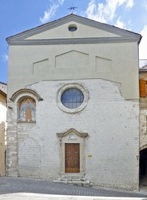
This church belongs to the Confraternita di Santa Maria dei Raccomandati, which was first documented in 1267: the church itself was first documented in 1315.
It has been restored on a umber of occasions, and little of the original survives.
Interior
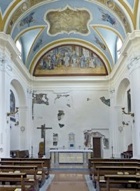
The interior of the church was remodelled after the earthquake of 1751. It was restored in 2009, at which point a number of important frescoes (below) were discovered.
Last Judgement (14th century)
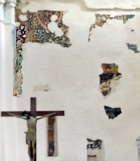
Frescoed Triptych (1445)
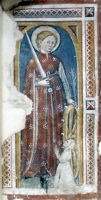
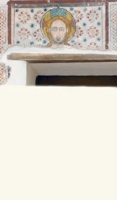
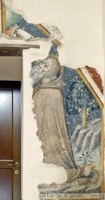
This frescoed triptych on the altar wall, which was rediscovered in the restoration of 2009, had unfortunately been damaged by the insertion of the door to the sacristy. It depicts the risen Christ, flanked by:
-
✴St Catherine of Alexandria, with the kneeling female donor, who belonged to the confraternity; and
-
✴St Antony Abbot in the desert, meditating on God the Father above.
The inscription at the lower right reads: “[fecit] fieri Francischa de Gabriellis MCCCCXLV”. This lady, who is presumably the figure depicted with St Catherine, was clearly a relative of Berardus de Gabriellis, a man who appears frequently in the records of the confraternity in the period 1440-90. The triptych is attributed to Giovanni di Corraduccio Mazzaforte.
Fresco Fragments ( ca. 1447)
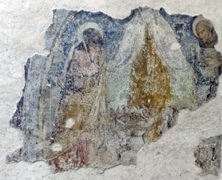
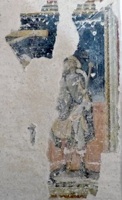
These fresco fragments, which were rediscovered in the restoration of 2009, are attributed to Bartolomeo di Tommaso, partly on stylistic grounds but also on the basis of a payment made to him for a now-lost altarpiece by the Confraternita di Santa Maria dei Raccomandati in 1447. The surviving fragments depict:
-
✴the Madonna della Misericordia with SS James and Bernardino of Siena and members (male and female) of the confraternity, on the right wall, near the counter-facade; and
-
✴the Crucifixion (almost completely lost) and St Roch, the counter-facade (to the right of the entrance).
Madonna and Child with saints (1510)
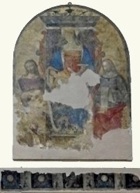
Annunciation (1580)
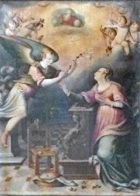
Art from the Church
Triptych (1480)
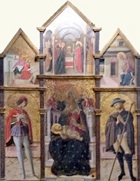
The main panels depict:
-
✴the Madonna and Child enthroned, with angels;
-
✴St Sebastian, on the left; and
-
✴St Roch, on the right.
The smaller, upper panels depict the Presentation at the Temple, flanked by figures of the Annunciation.
Genealogy of the Virgin (1497)
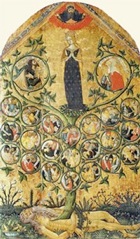
Panels (16th century)
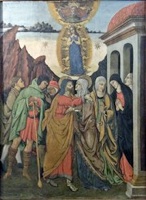
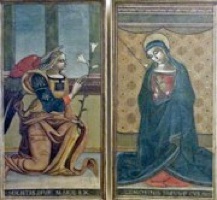
These three panels in the Pinacoteca Comunale, which were probably on the high altar, are attributed to Girolamo di Matteo da Gualdo. They comprise:
-
✴a panel of the Immaculate Conception, in which SS Joachim and Anne kiss beneath an apparition of the Immaculate Virgin in a mandorla, with God the Father above; and
-
✴panels of the figures of the Annunciation, which probably flanked the first panel in the original location.
Read more:
Details of the frescoes rediscovered in 2009 are presented in two articles by Enzo Storelli in “il Nuovo Serrasanta”: March 2010; and May 2011.
Return to Monuments of Gubbio.
Return to Walk around Gualdo Tadino.

